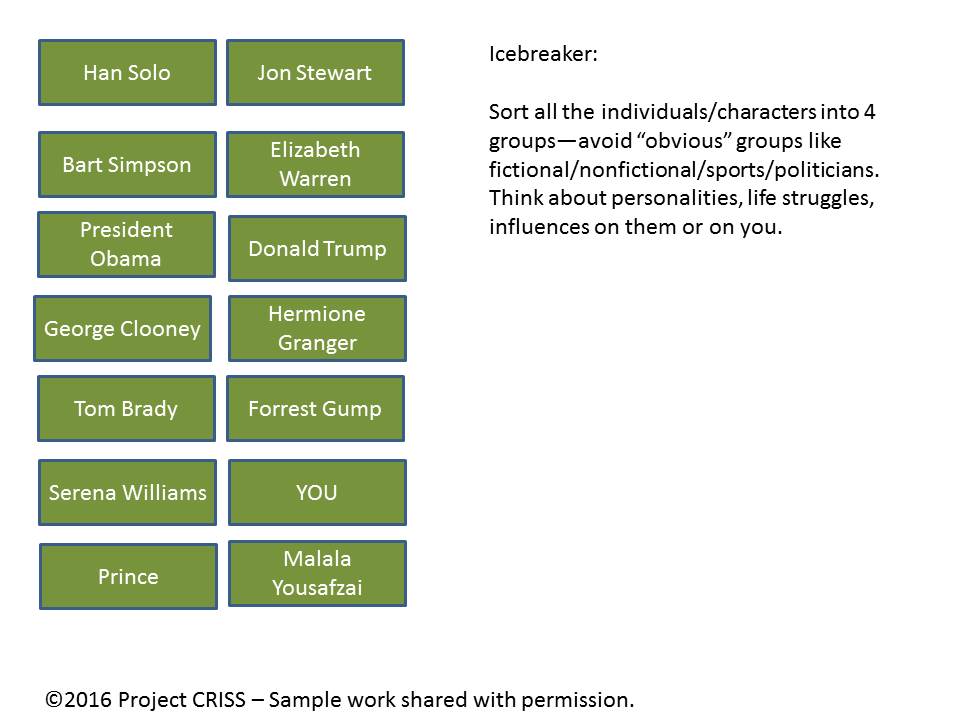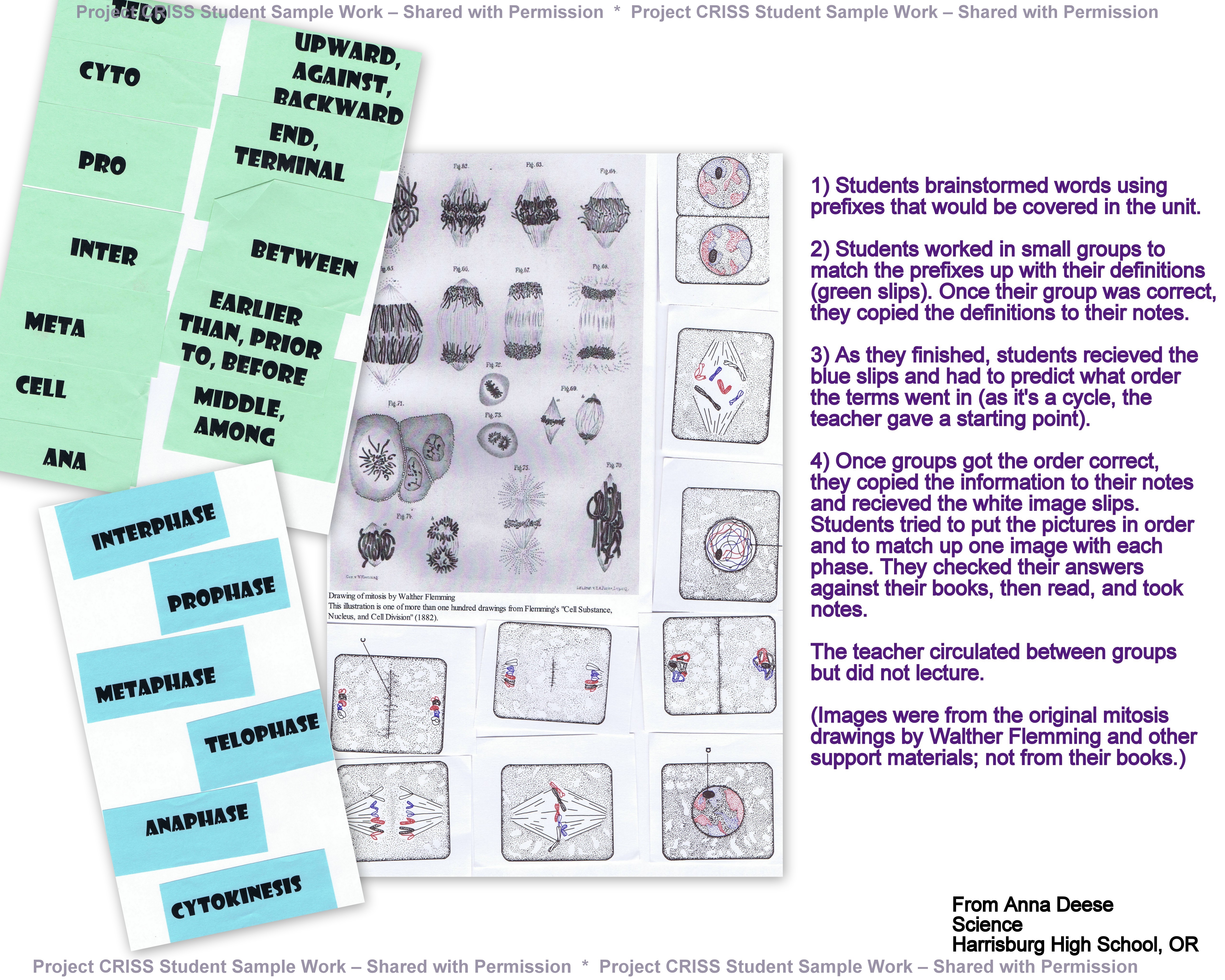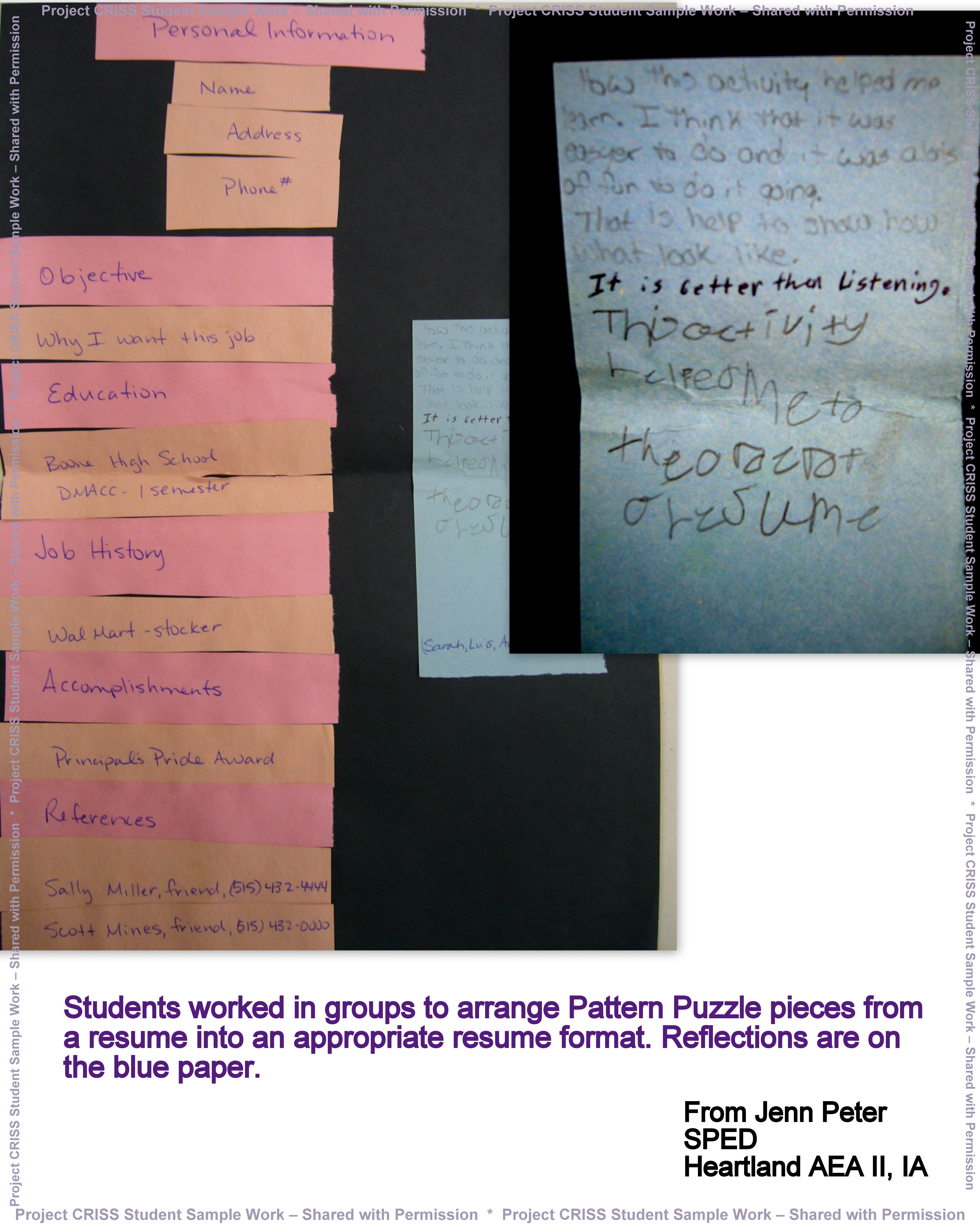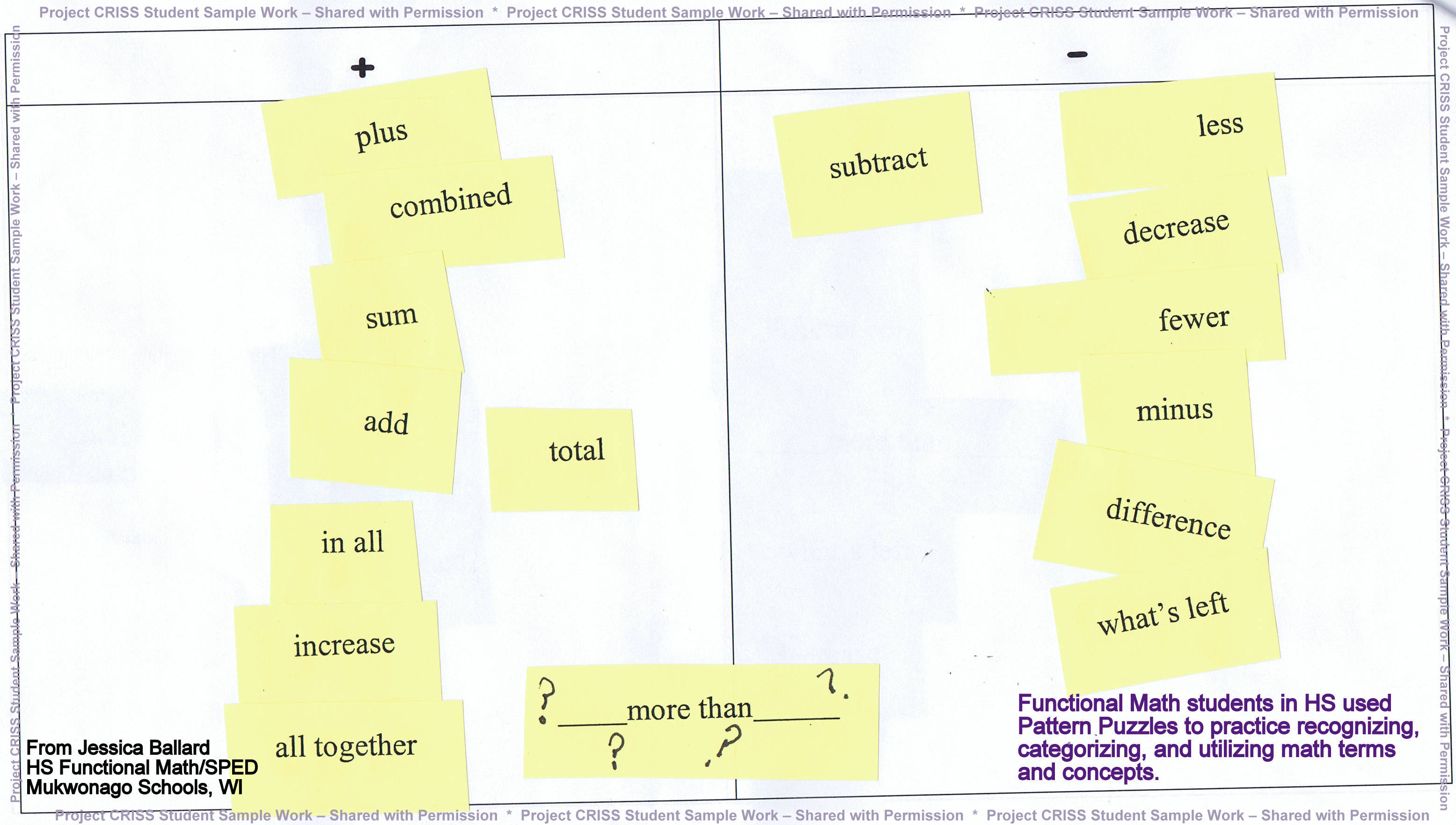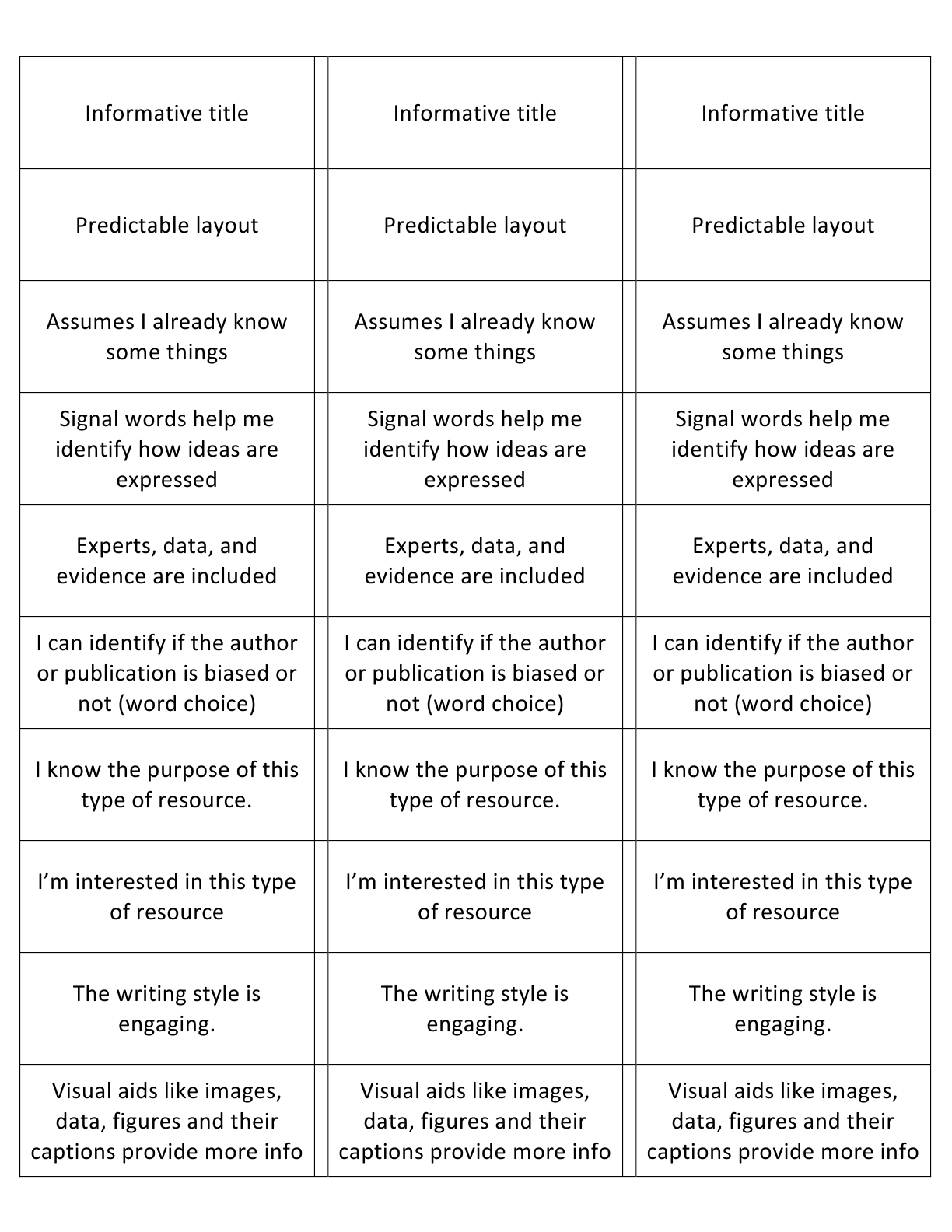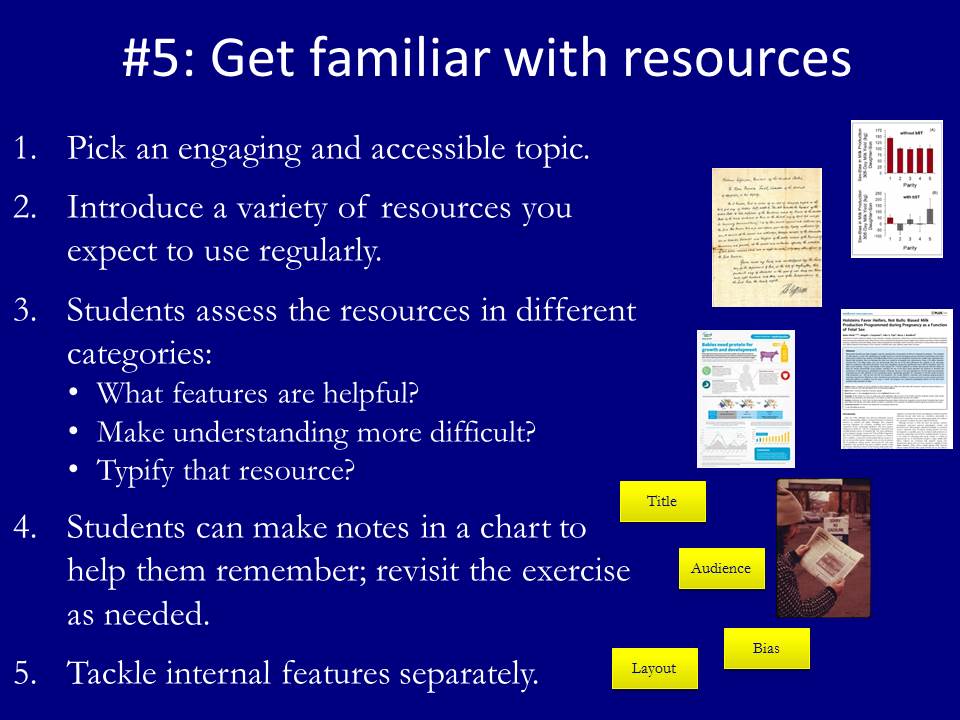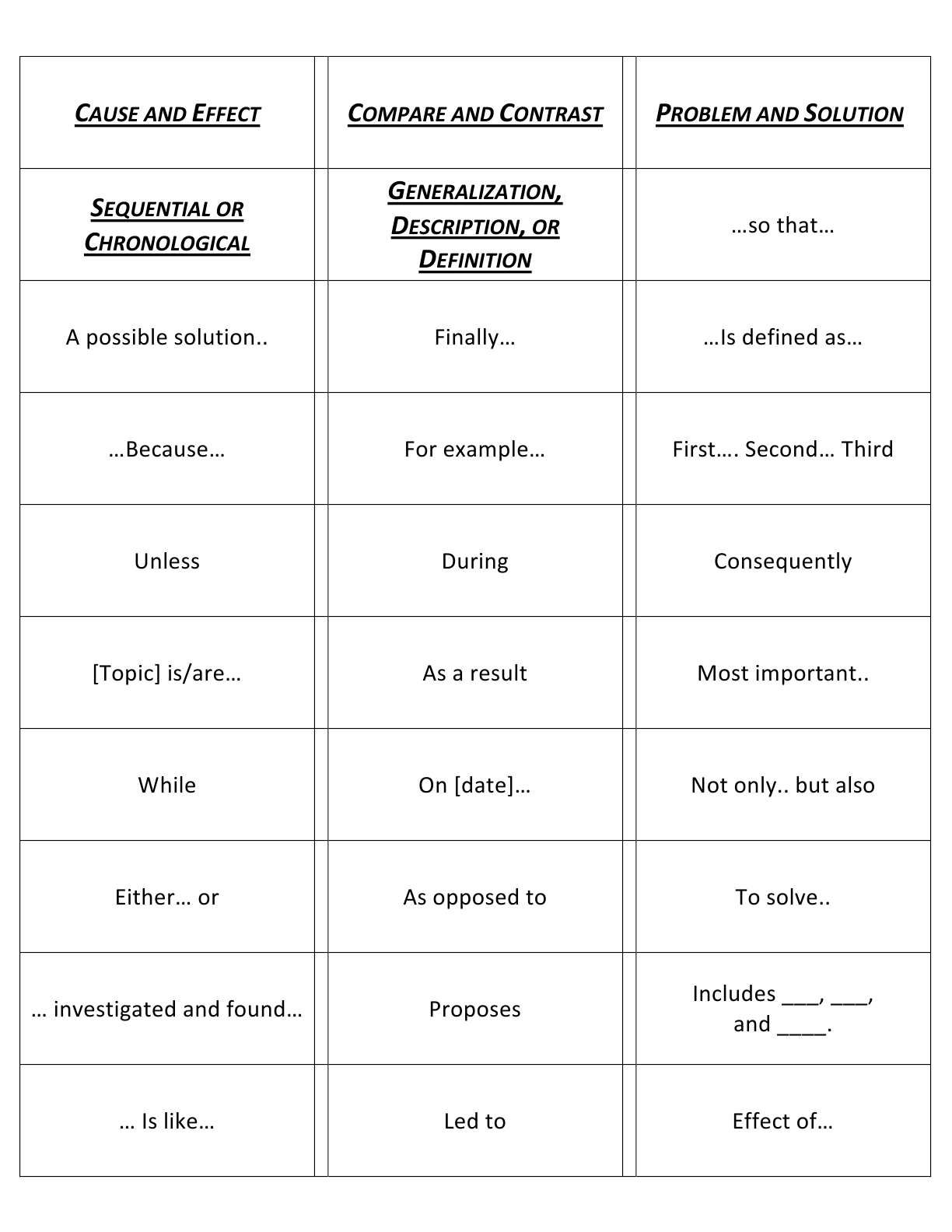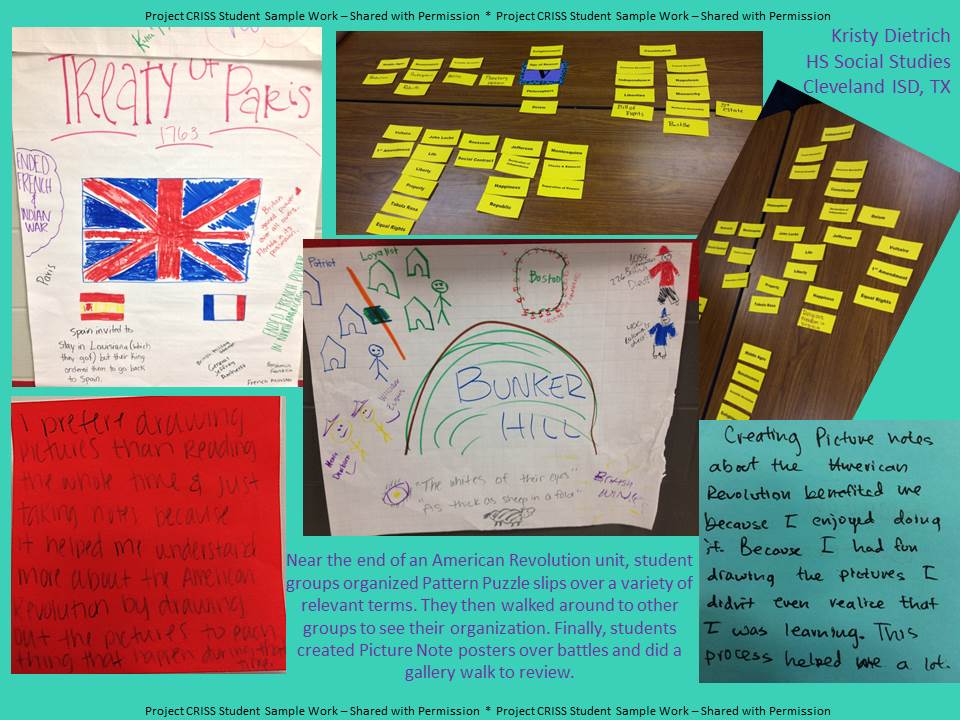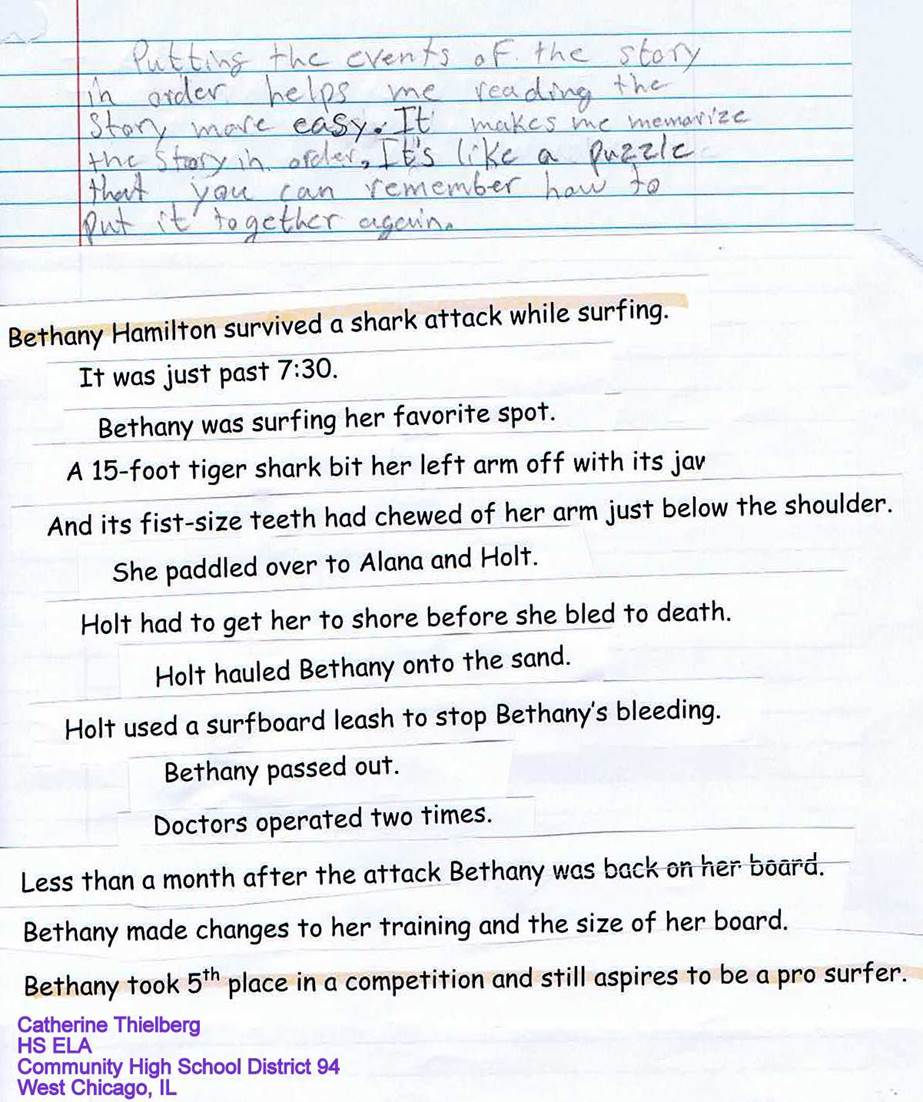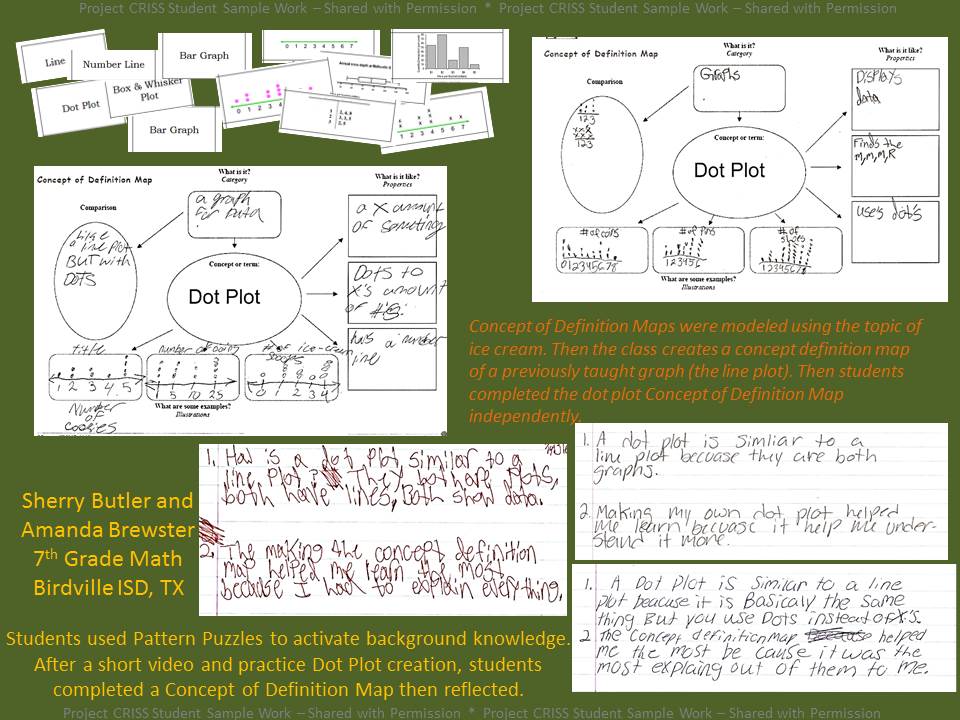Pattern Puzzles are awesome! Simply put, they are little slips of paper that students can manipulate to organize in any way that seems right to them. Like any strategy, there are no hard and fast rules for them. They can be used to activate background knowledge, as review, or in some intermediate fashion. They can foster creativity (see the assignment below left, click for larger size) or there can be right answers (below right, click for larger size).
One of the things I love about Pattern Puzzles is how they break through some common affective barriers. Students hate HATE putting pen to paper when they think they might be wrong - even if you assure them you won't be grading their work. But moving around little slips of paper and putting them in piles seems like something not-so-gradeable.
Here are some favorite uses:
- You can use slips to scaffold indpendent note-taking (students read/hear lecture, you provide PP slips with the details you'd like to see in notes, ask students to come up with Power 1 and Power 2 categories on sticky-notes and then move your PP detail slips into appropriate places, you check their format then allow them to be recorded into notebooks).
- Ask students to record evidence/details from their texts, videos, or lectures on sticky notes and then have them sort the sticky-notes into some other graphic organizer format (i.e., move slips so they follow Problem-Solution Note formats).
- Ask students to look at different types of texts and use PP slips with Author's Craft features to somehow label the texts. Maybe you want them to pair texts with the 5 slips that most define it or 3 slips that show the features that make it easiest or hardes to tackle the text. Here are two sets of slips here - you may want to modify them for you students.
- Ask them to look at themes in a creative light. Perhaps put a bunch of concepts or vocabulary on slips and give the students categories/themes on sticky notes. Ask them to discuss in small groups which theme seems most obviously to connect to the term. OR provide the themes and ask them to come up with vocabulary. OR give them the vocabulary and ask them to come up with the themes. Regardless, students will have something to discuss and will need to use the proper vocabulary as a part of the assignment.
- Be creative. Give students different people or events and ask them to categorize them. Students may go obvious and pair up Washinton with Lincoln with Obama but you can then throw a curveball and ask them to figure out how to re-categorize the individuals so that two seemingly unrealted individuals must share a category. In my workshops, I often ask people to get Bart Simpson in the same category as Abe Lincoln. Now they need to discuss a wider variety of topics about the people and dig deep to share unique details. You can do this with scientists, literary characters, etc. (A sample of this is posted at the top of this entry, left side.)
- Ranking! It doesn't matter what's in the group - have students rank the words from most/least important for understanding the unit. Rank most/least interesting. Most/least significant to the world. Most/least understood. So many details come up as students provide examples and justifications.
- The options are unlimited for "right" answer pattern puzzles: Sequence the steps for a math problem or science process/equation. Break up a few paragraphs and ask students to rearrange the slips to make a cohesive piece of writing (below, left). Match graphs/visuals to text descriptions (below, right).
My love for Pattern Puzzles runs deep. How do you use them?
Want to discuss this? Contact us at info@projectcriss.com or tweet your comment to us @ProjectCRISS. We'll add comments here!

